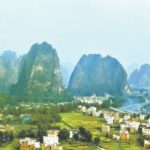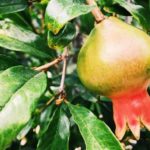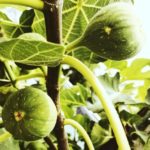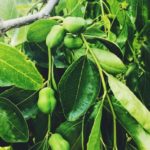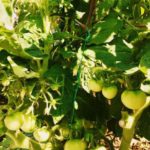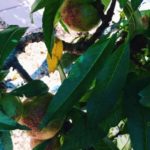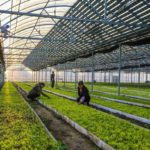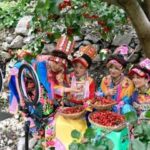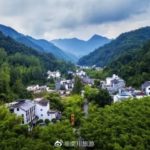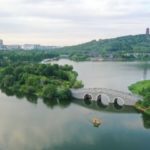Organized by the Natural History Museums of Los Angeles County and the California Academy of Sciences in San Francisco, the community science initiative has grown from two cities to nearly 700 worldwide
Los Angeles, CA (March 18, 2025) — City Nature Challenge — one of the world’s largest community science events — returns for its 10th year of connecting people through local nature and their communities. Kicking off April 25 at 12:01 am local time, the Challenge runs through April 28, 11:59 pm. From participating in organized biodiversity surveys to recording the wildlife in their own neighborhood, the City Nature Challenge encourages community scientists of all levels to explore their local environment—all while contributing to biodiversity science and conservation and using free mobile apps like iNaturalist. Identification of photographed species will be crowdsourced through the online community April 29 – May 4 and results will be announced on May 5.
“We’re so honored to celebrate a decade of City Nature Challenge success. The tremendous growth we’ve seen year after year is a testimony to the concern and love for nature that is shared in communities all over the world. It is so inspiring to see that thousands of people enthusiastically share their observations of nature every year” said Dr. Lori Bettison-Varga, President and Director of NHMLAC. “City Nature Challenge has become one of the biggest — both in terms of participation and scientific importance — community science events in the world, and it promises to only continue to expand from here. I hope everyone uses this anniversary as a reason to go out and explore nature in our own neighborhoods and cities.”
After launching the first-ever City Nature Challenge in 2016 with just 1,000 observers across a pair of California cities, the Natural History Museums of Los Angeles County (NHMLAC) and San Francisco’s California Academy of Sciences (CAS) are hosting their 10th effort. In 2024, the Challenge broke numerous records, with more than 83,500 community scientists around the world amassing over 2.4 million observations from 690 cities in 51 countries. Since its inception, City Nature Challenge has collected over 7.13 million urban biodiversity observations of 94,000+ species and engaged over 364,000 people.
“Not only does the City Nature Challenge provide an amazing opportunity for people all over the world to celebrate nature near them, but the data we collect together is critical to informing conservation decision-making at all scales, from the local to the global,” said Dr. Rebecca Johnson, Director of the CAS Center for Biodiversity and Community Science and City Nature Challenge Co-Founder. “Every year participants document rare and endangered species, new invasive species, and make other important contributions to our understanding of biodiversity.”
In previous years, observations made during the Challenge have helped scientists detect patterns of biodiversity change on a global and local scale. These wildlife observations provide invaluable insights, allowing scientists, conservationists, and policymakers to make informed resource management and conservation decisions that can help curb biodiversity loss. The City Nature Challenge is aligned with conservation strategies both locally and globally, particularly the 30×30 effort as outlined in the Kunming-Montreal Global Biodiversity Framework targets. This effort aims to protect 30% of the world’s lands and coastal waters by 2030. California is a world leader in 30×30, and City Nature Challenge community-collected data has helped inform decision making.
The City Nature Challenge is a community-based collaborative event that harnesses scientific data to regenerate ecosystems and reverse biodiversity loss. By observing and documenting local wildlife, community scientists give insight into the biodiversity of urban areas throughout the world.
“Last year, we were able to share the success of the City Nature Challenge in front of hundreds of world leaders at the United Nations’ Convention on Biological Diversity,” said Lila Higgins, NHMLAC’s Senior Manager of Community Science and City Nature Challenge Co-Founder. “It really shows that events like CNC — which started off as just a fun way to engage Californians with their local nature — can grow into large-scale efforts helping to tackle really big global problems.”
For both budding and veteran community scientists, participation is easy. Photos of wild plants, animals, or fungi taken during the Challenge can be uploaded to iNaturalist, where an online community of naturalists confirms species identifications. Whether participating in an organized habitat survey or making observations in their own neighborhood, the Challenge is for budding and seasoned explorers alike.
Wildlife can be found in the participants’ homes, neighborhoods, backyards or anywhere else, and can be any wild plant, animal, fungi, slime mold or other evidence of life (scat, fur, tracks, shells, etc.). Then the community scientists can just take photos and/or sound recordings of their findings and upload to iNaturalist or their city’s chosen platform either via an app or website—learning more about the plants and animals they find as their observations are identified. A guide to getting started is now available online.
Those not able to take photos or record their observations can focus their efforts on identifying species documented in their area during and after the Challenge. Many organizers in cities around the world will be hosting wildlife identification events April 29 – May 4.

